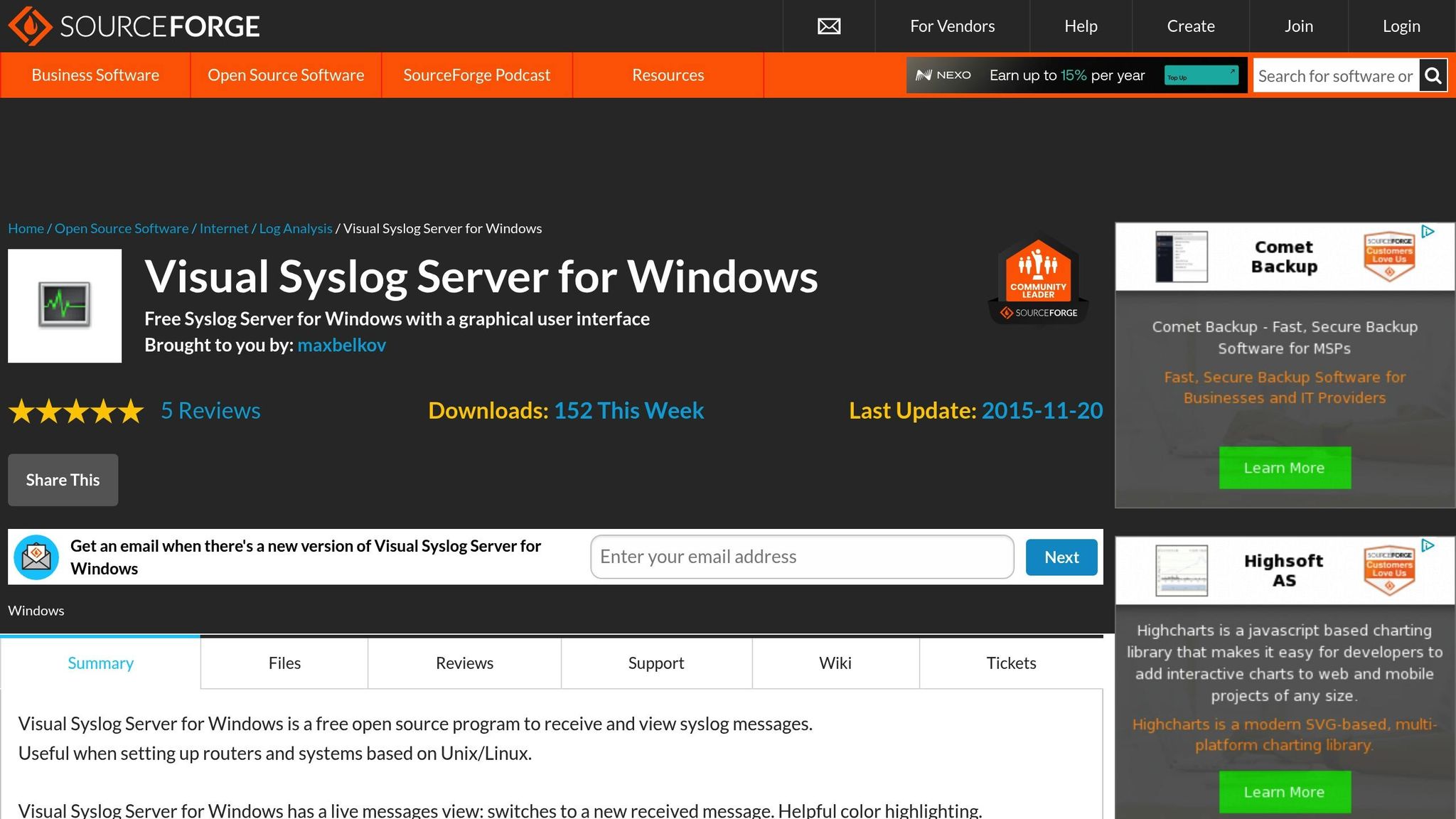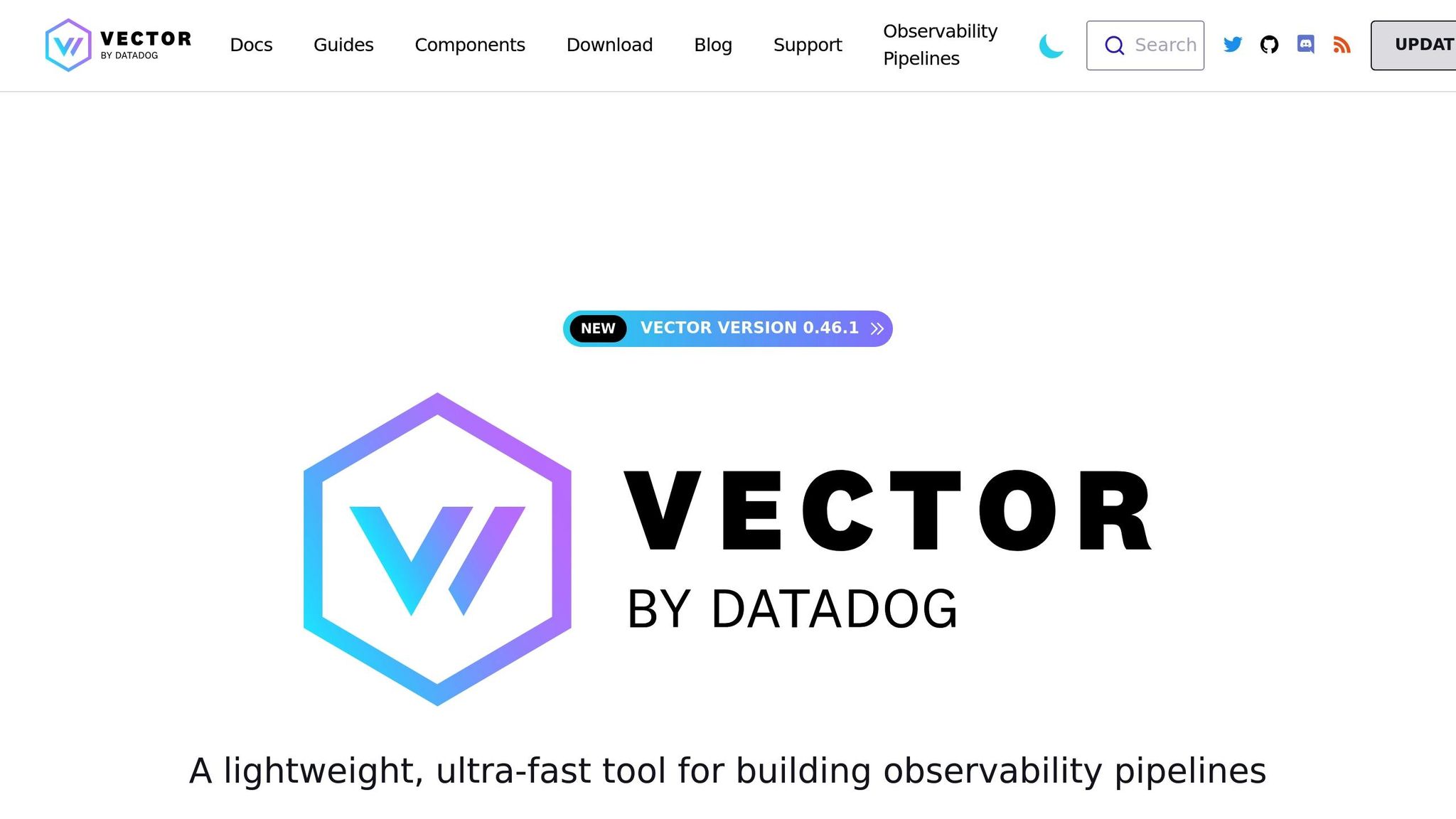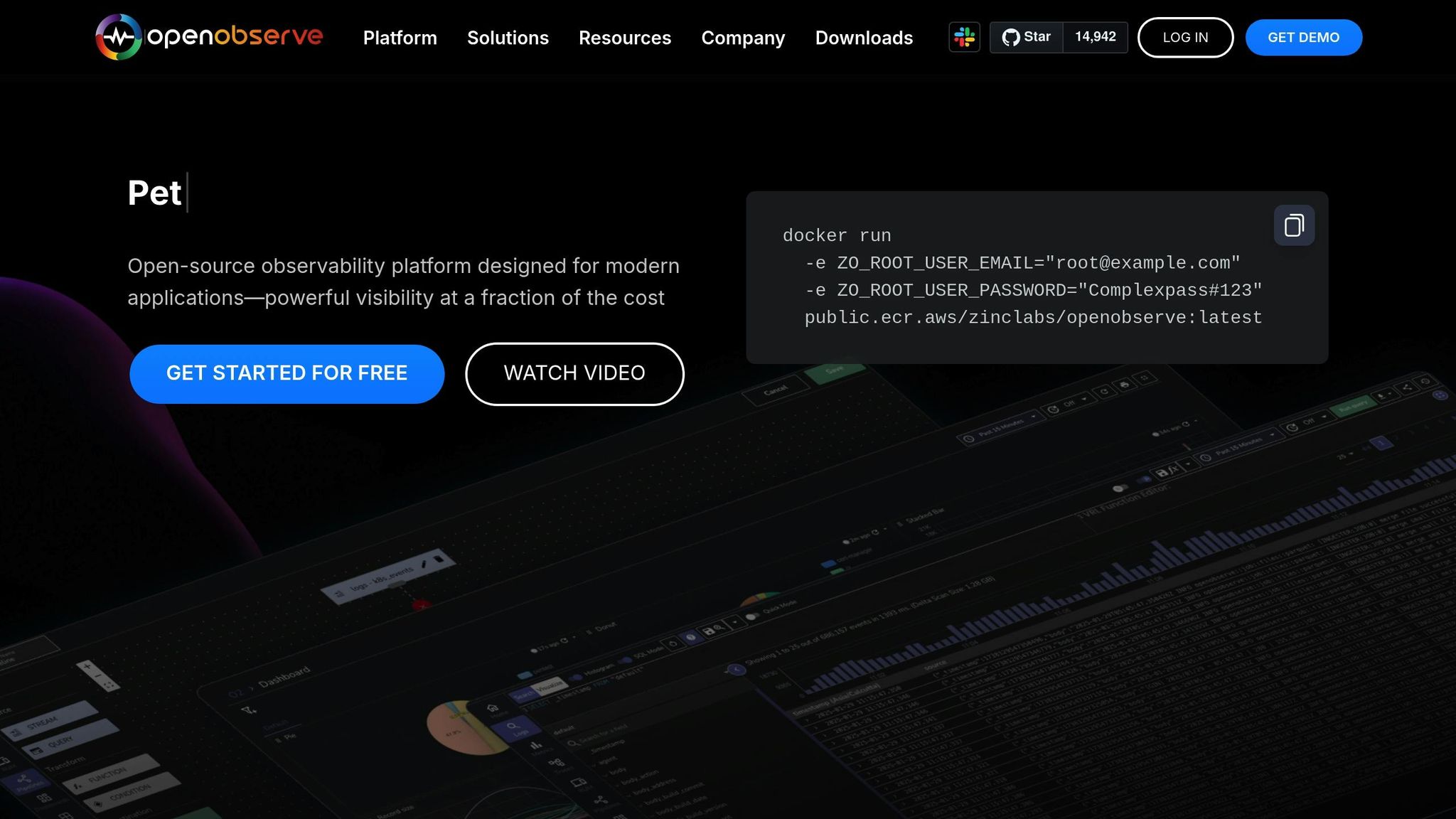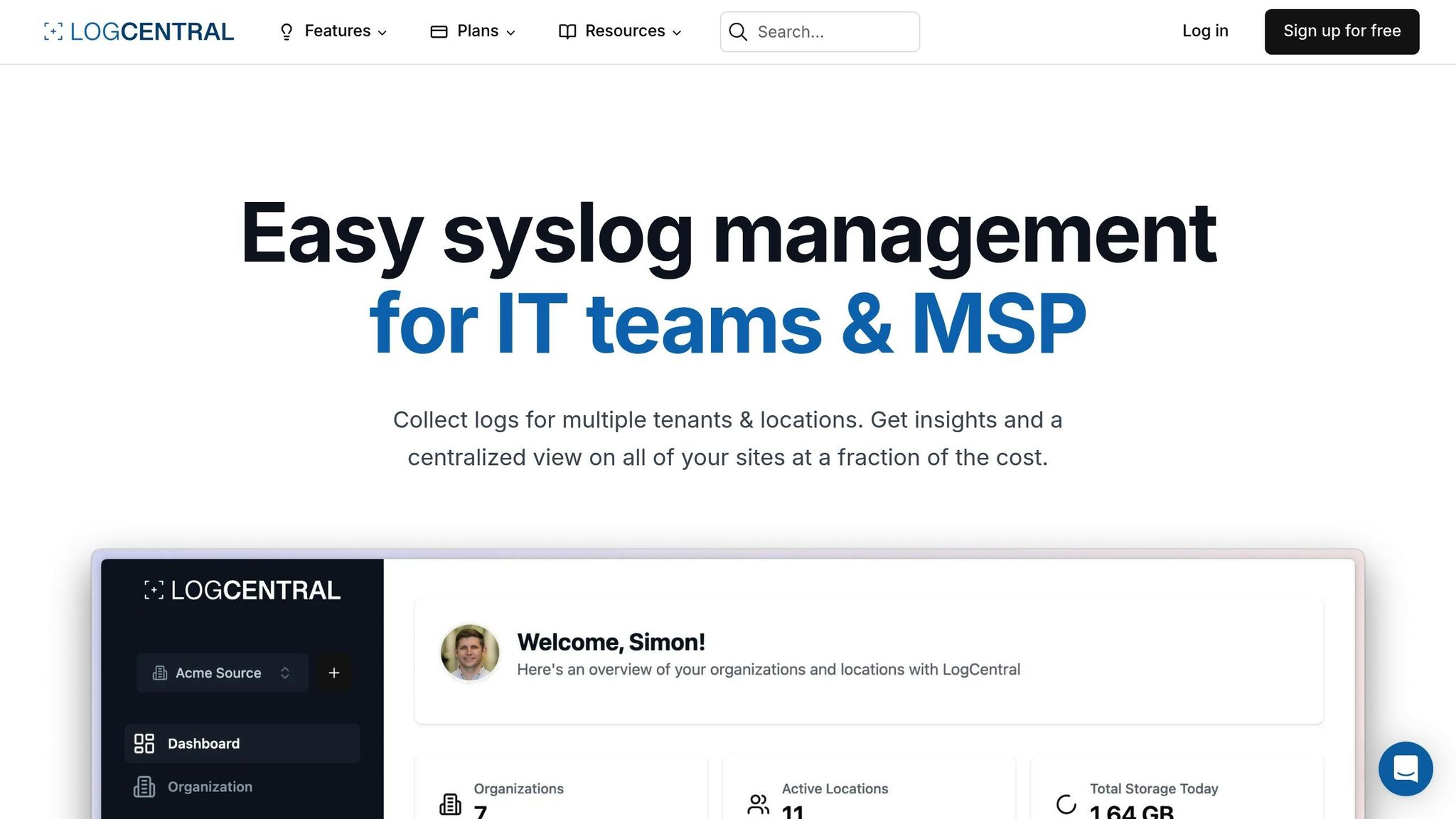
Free syslog server : where to find one?
Free syslog server : where to find one?
Syslog servers help centralize and manage logs from devices, servers, and applications. While free options exist, each has its pros and cons. Here's a quick breakdown:
- Visual Syslog Server (Windows-only): Simple, lightweight, ideal for small setups but lacks advanced features like cross-platform compatibility.
- Vector (Cross-platform): Powerful and flexible, handles high log volumes, but can be complex to configure.
- OpenObserve (Self-hosted): Offers full observability (logs, metrics, traces) and low storage costs but requires in-house management.
- LogCentral (Cloud-based): Fully managed, scalable, and compliant, eliminating the hassle of self-hosting.
Quick Comparison
| Feature | Visual Syslog Server | Vector | OpenObserve | LogCentral |
|---|---|---|---|---|
| Platform | Windows-only | Cross-platform | Cross-platform | Cloud-based |
| Ease of Use | Simple setup | Complex setup | Moderate setup | No setup needed |
| Data Types | Syslog messages | Logs, metrics | Logs, metrics, traces | Logs |
| Scalability | Limited | High | Petabyte scale | Auto-scalable |
| Storage | Disk-based | Configurable sinks | Local/S3/etc. | Cloud storage |
| Compliance | Basic filtering | None | Built-in auth | GDPR-compliant |
For small setups, start with Visual Syslog Server. For advanced pipelines, try Vector. If you need full observability, OpenObserve is great but requires management. For a hassle-free, scalable solution, LogCentral is the best choice.
1. Visual Syslog Server for Windows

Visual Syslog Server is a free, open-source tool designed for Windows. It processes syslog messages in real time over UDP/TCP port 514 (RFC 3164) and is compatible with Windows XP through 8.1 and Server 2003-2012.
Key Features:
- Message Storage: Automatically saves logs to disk, with options for rotation based on file size or date.
- Advanced Filtering: Allows filtering of messages by facility, priority, host, source address, tag, or content.
- Visual Customization: Includes color-coded highlighting to make log analysis easier.
- Alert System: Offers customizable notifications via pop-up alarms, sound alerts, or email.
The server also supports automation, enabling users to:
- Run external programs triggered by specific message content.
- Save targeted messages to designated files.
- Send email notifications using SMTP with SSL/TLS authentication (works with services like Gmail and iCloud).
Despite its useful features, Visual Syslog Server has some limitations. It does not currently provide message statistics, though this feature is expected in future updates. Additionally, its Windows-only design may not suit organizations with mixed operating systems.
This lightweight tool is efficient and can minimize to the system tray, making it ideal for small-scale use or testing environments. However, for those needing cross-platform compatibility and built-in log analytics, alternatives like LogCentral might be better suited.
2. Vector Data Pipeline

Vector is a high-performance log pipeline built with Rust, designed to prioritize speed and efficient memory usage. Unlike the Windows-only Visual Syslog Server, Vector works across platforms and has gained significant traction, with over 30 million downloads, contributions from more than 300 developers, and 13,000+ GitHub stars [2].
It supports collecting, transforming, and routing logs in various modes: daemon, sidecar, or centralized aggregator. With compatibility for 43 sources, 14 transforms, and 59 sinks, Vector offers extensive flexibility [2]. Delivered as a standalone binary with no external dependencies, it installs quickly and can be configured using YAML, TOML, or JSON. However, its wide range of features can add complexity, so teams looking for simpler syslog ingestion might lean toward tools like LogCentral.
Thanks to its Rust foundation, Vector handles high log volumes efficiently while maintaining low resource usage. It's an excellent choice for organizations needing advanced log transformations and routing. However, for those prioritizing simplicity and ease of setup, other options may be a better fit.
3. OpenObserve Platform

OpenObserve builds on cross-platform pipelines like Vector to provide a complete solution for observability.
This platform is a cloud-native, open-source tool designed for managing logs, metrics, and traces on a massive scale. It serves as an alternative to Elasticsearch, offering deployment options that range from single-binary setups to high-availability configurations.
One standout feature is its cost efficiency - OpenObserve delivers approximately 140× lower log-storage costs compared to Elasticsearch [3]. This is achieved through optimized storage and compatibility with various storage solutions like disk, S3, MinIO, GCS, and Azure Blob.
Key Features:
- Secure Access Control: Includes built-in authentication for better security.
- Dynamic Schema: Automatically adjusts to the structure of your logs.
- SQL and PromQL Support: Enables log analysis using familiar query languages.
- 18+ Chart Types: Offers diverse visualization options.
- Real-Time Log Enrichment and Transformation: Enhances logs on the fly.
If you opt for self-hosting, you'll need to handle redundancy, backups, security, log integrity, and compliance requirements (such as GDPR, HIPAA, and SOC 2) on your own.
OpenObserve also supports OpenTelemetry and comes with a built-in user interface, eliminating the need for extra tools. This makes it an all-in-one solution for teams aiming to streamline their observability setup.
However, managing the platform in-house can still be complex. For teams looking to avoid this overhead, LogCentral’s managed cloud service offers a hassle-free alternative.
4. LogCentral Solution

LogCentral provides a cloud-based, managed alternative to free, self-hosted tools. It delivers enterprise-level features right out of the box, avoiding the hidden costs often associated with on-premises solutions.
Cost-Effective Infrastructure
Research shows that on-premises servers can cost 4–5 times more than cloud solutions when factoring in maintenance and staffing expenses [1]. LogCentral eliminates these costs by offering:
- No hardware or maintenance expenses
- Automatic scaling, storage management, and geo-redundancy
- Built-in security updates and compliance
This approach avoids the high expenses tied to maintaining on-premises systems.
Enterprise Features
LogCentral comes packed with features designed for robust security, compliance, and monitoring:
- Security: Encryption during transit and at rest, automatic firewalls, and smart IP management
- Compliance: GDPR support, customizable retention policies, and detailed audit trails
- Monitoring: 24/7 system alerts, live log dashboards, and intelligent notifications
- Integration: Compatible with Cisco Meraki, supports multi-tenancy, and offers role-based access control
Simplified Management
The platform takes care of storage, compliance, redundancy, security, and auditability for you. It automatically scales to handle increasing log volumes while maintaining a 99.9% uptime SLA [1].
This streamlined management approach avoids the manual setup required by tools like Visual Syslog, the complexity of Vector, and the overhead of hosting OpenObserve yourself.
MSP-Friendly Design
LogCentral is designed with Managed Service Providers (MSPs) in mind, offering features that simplify client management:
- Multi-tenant support for keeping client environments separate
- A unified dashboard for managing multiple accounts
- Customizable retention policies for each client
- Detailed activity tracking and audit logs
These features let MSPs focus on analyzing logs rather than dealing with infrastructure. Try LogCentral with a 7-day free trial. Up next, we’ll compare these features directly with free alternatives.
Feature Comparison
Explore how these syslog solutions stack up in terms of features, performance, ease of implementation, cost, and ideal use cases.
Core Features and Capabilities
| Feature | Visual Syslog Server | Vector | OpenObserve | LogCentral |
|---|---|---|---|---|
| Data Types | Syslog messages | Logs and metrics | Logs, metrics, traces, RUM | Logs |
| Deployment | Windows application | Daemon, sidecar, aggregator | Single-binary or high-availability | Cloud-based |
| Storage | Files on disk | Configurable sinks (e.g., S3) | Local disk, S3, MinIO, GCS, Azure Blob | Cloud storage |
| Scalability | Limited by Windows app | Handles demanding workloads | Petabyte scale | Scalable cloud platform |
| Transformations | Filtering, highlighting, notifications | Programmable transforms (VRL) | Pipelines for enrichment, redaction, etc. | – |
| Compliance | Basic filtering | – | Built-in authentication | GDPR compliance |
| Ease of Use | Simple installation, no setup | Composable configuration | Easy to operate | Designed for user-friendliness |
Each solution brings unique strengths to the table. For instance, Vector is ideal for handling high-volume log processing, OpenObserve focuses on efficient storage for large-scale observability, and LogCentral offers seamless cloud-based scaling.
Ease of Implementation
- Visual Syslog Server: Ready to use immediately after installation. Minimal setup required.
- Vector: Supports VRL-based transforms for customizable pipelines.
- OpenObserve: Quick to deploy, with setup taking under two minutes.
- LogCentral: No server management needed - just create an account to get started.
Cost Considerations
Cloud services often provide better value compared to on-premises solutions. On-prem options can cost 4–5× more when you factor in maintenance and staffing needs. Even free tools may come with hidden infrastructure costs.
Use Case Alignment
- Visual Syslog Server: Best for small-scale Windows environments.
- Vector: Suited for custom log pipelines and demanding workloads.
- OpenObserve: A great choice for self-hosted observability with large-scale data.
- LogCentral: Perfect for fully managed, compliant log management without the hassle of self-hosting.
Each solution caters to specific needs, but LogCentral stands out for its managed scalability and compliance, eliminating the trade-offs of self-hosted setups.
Recommendation
After evaluating the options, LogCentral stands out as the best choice for U.S. IT teams in terms of value and efficiency. While free tools like Visual Syslog Server, Vector, and OpenObserve might seem appealing, they often come with hidden expenses related to infrastructure, maintenance, and operational challenges.
LogCentral simplifies things by charging only for log volume, removing the need for over-provisioning and infrastructure management. Its cloud-based design ensures reliable performance, built-in redundancy, and easier compliance with regulations.
LogCentral is ideal for:
- IT teams needing a hassle-free logging solution
- Organizations requiring GDPR, SOC 2 compliance, encryption, and audit logging out of the box
- MSPs managing multiple clients with multi-tenant features
- Businesses aiming to cut down on operational complexity
- Companies focused on scalability, security, and a usage-based pricing model